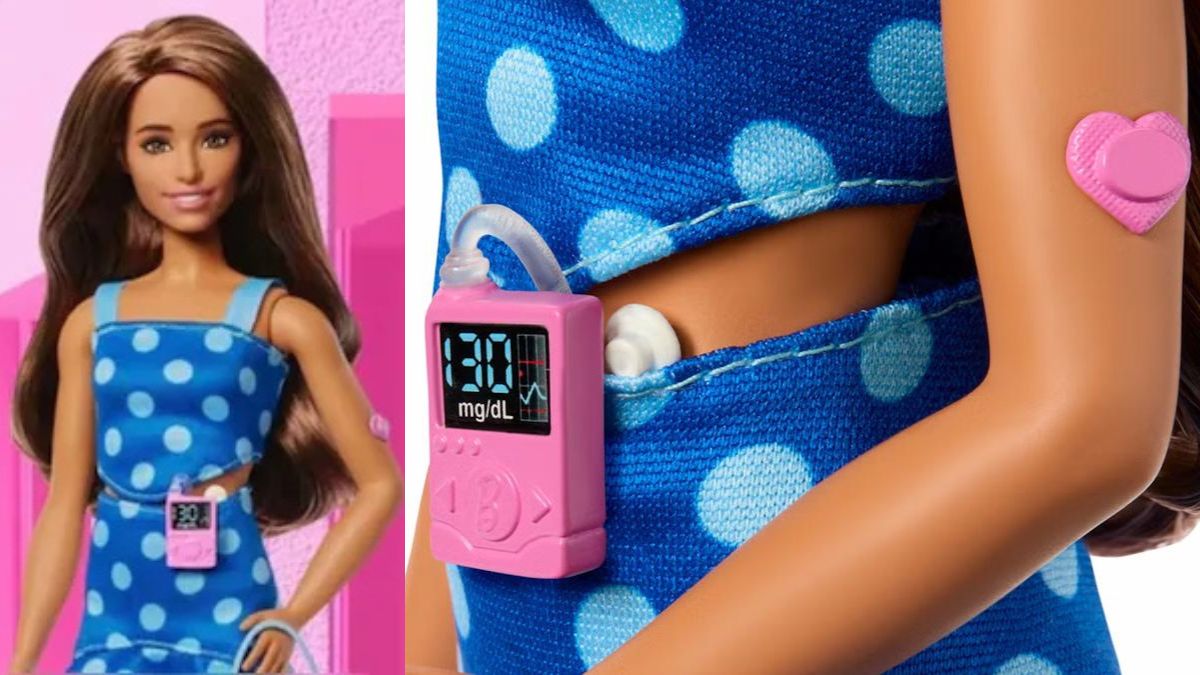Barbie with Type 1 Diabetes has parents divided: 'Representation matters'
 Barbie with Type 1 Diabetes
Barbie with Type 1 Diabetes
Barbie just got a new accessory — an insulin pump. Recently, Mattel unveiled a Barbie doll with Type 1 diabetes, complete with a visible insulin pump and a glucose monitor on her arm. The launch, done in collaboration with Marvel Comics and the Juvenile Diabetes Research Foundation (JDRF), marks another step in the 65-year-old brand’s shift toward inclusive, diverse representation of real children’s lives.
For parents raising children with Type 1 diabetes, it’s not just another toy. It’s a moment of visibility.
“My eight-year-old couldn’t stop smiling. She said, ‘Barbie has a pump like me!’” says Shriya Vellaru, a Mumbai-based mother whose daughter Ananya was diagnosed three years ago. “We’ve spent years explaining her condition to relatives, teachers, even classmates. But something clicked for her when she saw Barbie. It felt normal.”
Over the last few years, Barbie has moved beyond the stereotypical blonde bombshell image. From Barbies with vitiligo to those using wheelchairs, prosthetic limbs, and hearing aids, Mattel has steadily diversified its line to reflect the reality of many children. The latest diabetes Barbie is part of this ongoing campaign — and it may be among the most significant, given how invisible chronic conditions often are.
Type 1 diabetes, an autoimmune condition in which the pancreas produces little or no insulin, affects children of all genders, races, and geographies. India alone is estimated to have over 95,000 children living with the condition. The daily challenges — checking blood sugar, counting carbs, injecting insulin — can be physically and emotionally draining, especially when a child feels “different.”
“Representation matters. It tells children that they’re not alone, not broken, and definitely not weird,” say doctors and psychologists who's attend to children with Type 1 diabetes. “When you’re seven or eight and you’re the only one in class wearing a sensor or taking injections during lunch, it’s isolating. A doll can’t fix everything, but it can start conversations,” says Vellaru.
The release is also tied to a special-edition comic by Marvel featuring a young superhero character who wears a glucose monitor and defeats villains without hiding her condition. Together with the Barbie, it creates a rare moment of coordinated pop culture visibility for kids with chronic illnesses.
For nine-year-old Vivaan Kalp (name changed) from Bengaluru, it’s a dream come true. “He’s always loved action figures,” says his mother Rhea. “But when he saw the comic book hero with a Dexcom on his arm, he said, ‘Mom, I want to be like him.’ It made him feel powerful — like his diabetes didn’t have to be a weakness.”
Parents are also hopeful that such representation will lead to better awareness in schools and playgroups. “We’ve had situations where teachers thought my son could not go on school trips or participate in sports,” says Priya M, whose 10-year-old son was diagnosed in 2021. “A Barbie won’t solve structural issues, but at least it shows the world what normal can look like.”
Not everyone is satisfied, though. Still, most agree that this is a positive step in the right direction. For now, little girls and boys with Type 1 can dress up a doll that looks just a bit more like them — one glucose monitor at a time.
Society